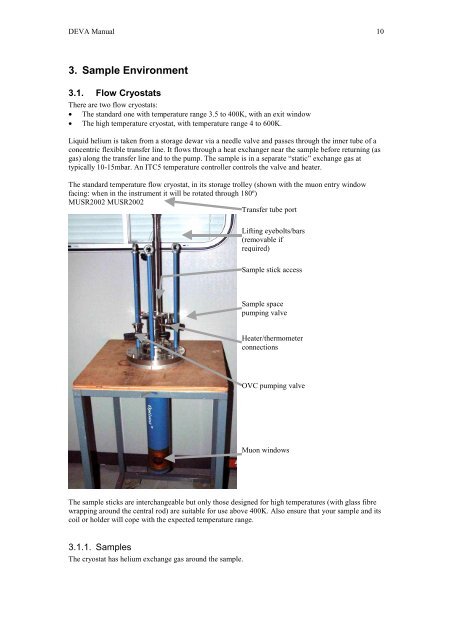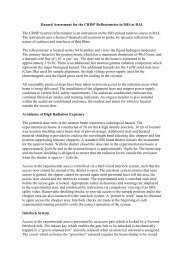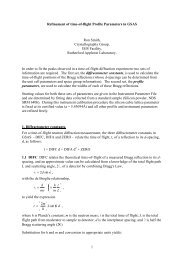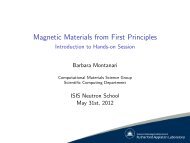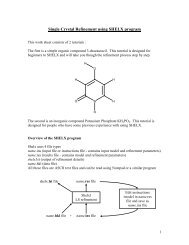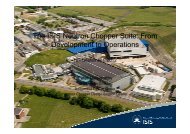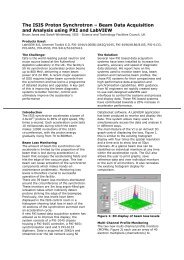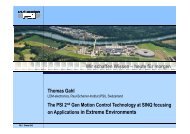Deva user manual - ISIS
Deva user manual - ISIS
Deva user manual - ISIS
Create successful ePaper yourself
Turn your PDF publications into a flip-book with our unique Google optimized e-Paper software.
DEVA Manual 10<br />
3. Sample Environment<br />
3.1. Flow Cryostats<br />
There are two flow cryostats:<br />
• The standard one with temperature range 3.5 to 400K, with an exit window<br />
• The high temperature cryostat, with temperature range 4 to 600K.<br />
Liquid helium is taken from a storage dewar via a needle valve and passes through the inner tube of a<br />
concentric flexible transfer line. It flows through a heat exchanger near the sample before returning (as<br />
gas) along the transfer line and to the pump. The sample is in a separate “static” exchange gas at<br />
typically 10-15mbar. An ITC5 temperature controller controls the valve and heater.<br />
The standard temperature flow cryostat, in its storage trolley (shown with the muon entry window<br />
facing: when in the instrument it will be rotated through 180º)<br />
MUSR2002 MUSR2002<br />
Transfer tube port<br />
Lifting eyebolts/bars<br />
(removable if<br />
required)<br />
Sample stick access<br />
Sample space<br />
pumping valve<br />
Heater/thermometer<br />
connections<br />
OVC pumping valve<br />
Muon windows<br />
The sample sticks are interchangeable but only those designed for high temperatures (with glass fibre<br />
wrapping around the central rod) are suitable for use above 400K. Also ensure that your sample and its<br />
coil or holder will cope with the expected temperature range.<br />
3.1.1. Samples<br />
The cryostat has helium exchange gas around the sample.


